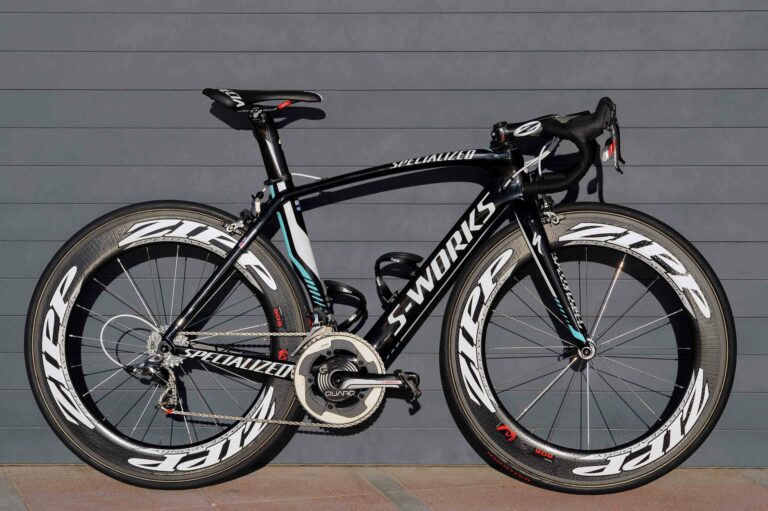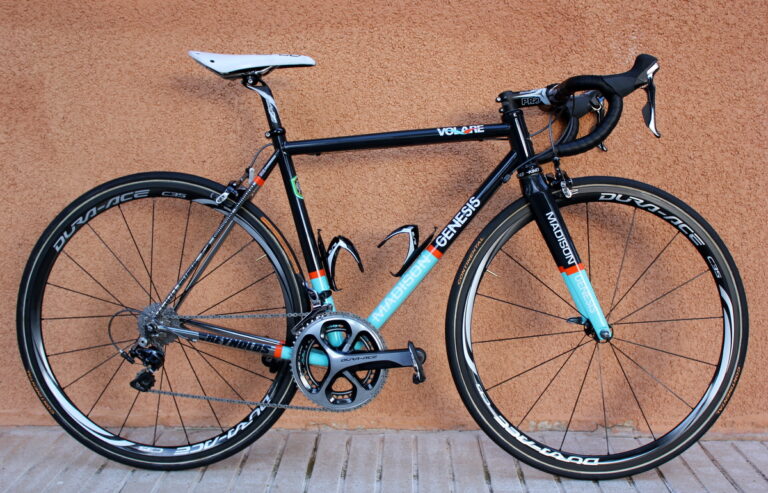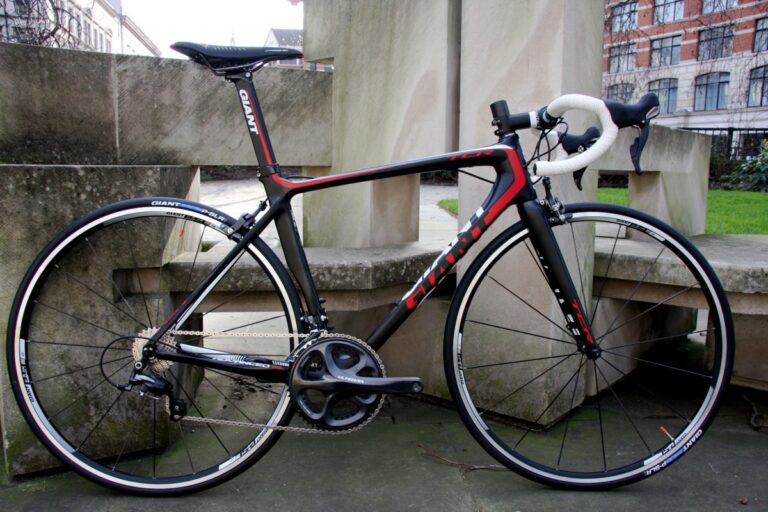We’ve had three ‘proper’ rides on the RCUK winter bike.
A build completed over several weeks with items called in specifically for the project, borrowed, or taken from the RCUK store cupboard, it’s the machine on which the majority of our remaining winter rides will be completed.
Here’s a report of our experiences to date of the winter bike’s frameset and principal components.
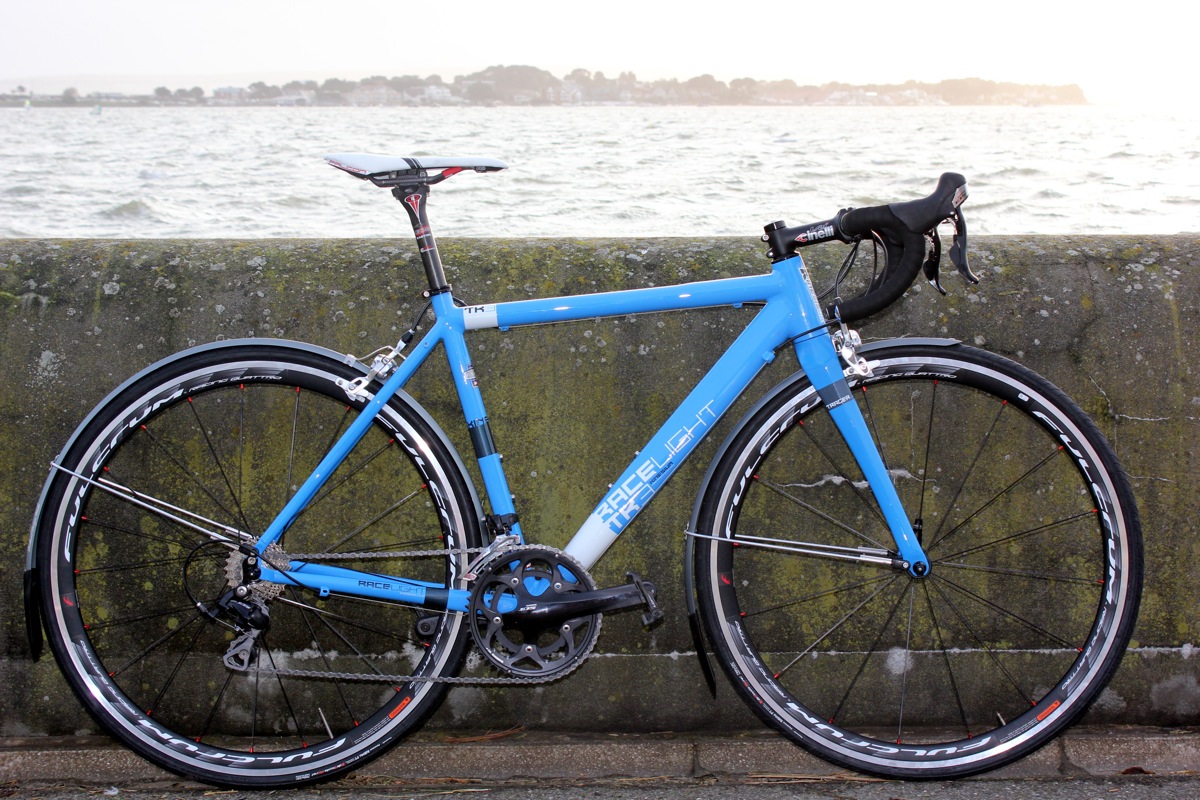
The frameset
A Kinesis Racelight TK3 frame and full carbon Tracer fork provide the chassis. The frame is made from 6,000 series aluminium and as a result, is light and stiff.
The character of aluminium is less forgiving than carbon, but given the choice between low-end carbon, which typically provides an uninspiring ride, or a well-crafted aluminium offering, we’d take the latter every time. The Racelight TK3 confirms this view.
Its principal development from earlier incarnations is the tapered headtube, which accommodates the 1.5 inch lower bearing on the full carbon Tracer fork. Its contribution to the RCUK winter bike has been to provide responsive steering, despite being encumbered with mudguard and a front wheel, stem, and bar which, while adequate for winter, are not desperately light.
The rolling stock
The RCUK winter bike rolls on Fulcrum Racing Quattros, a 35mm deep alloy rim, with 16 radially-laced spokes at the front, and 21 at rear, where they are laced radially on the non-driveside and in a cross-pattern on the driveside.
It’s hard so early in our acquaintance with the winter bike to offer a definitive opinion on the wheelset, especially not having yet swapped them for others and back again to assess the difference made to its performance. In the coming weeks, we’ll try the TK3 with Mavic Askium hoops, a budget wheel suited to the rigours of winter, and the slightly more upscale Ksyrium Elite S, already tested by Tim O’Rourke with carbon, steel, and titanium frames.
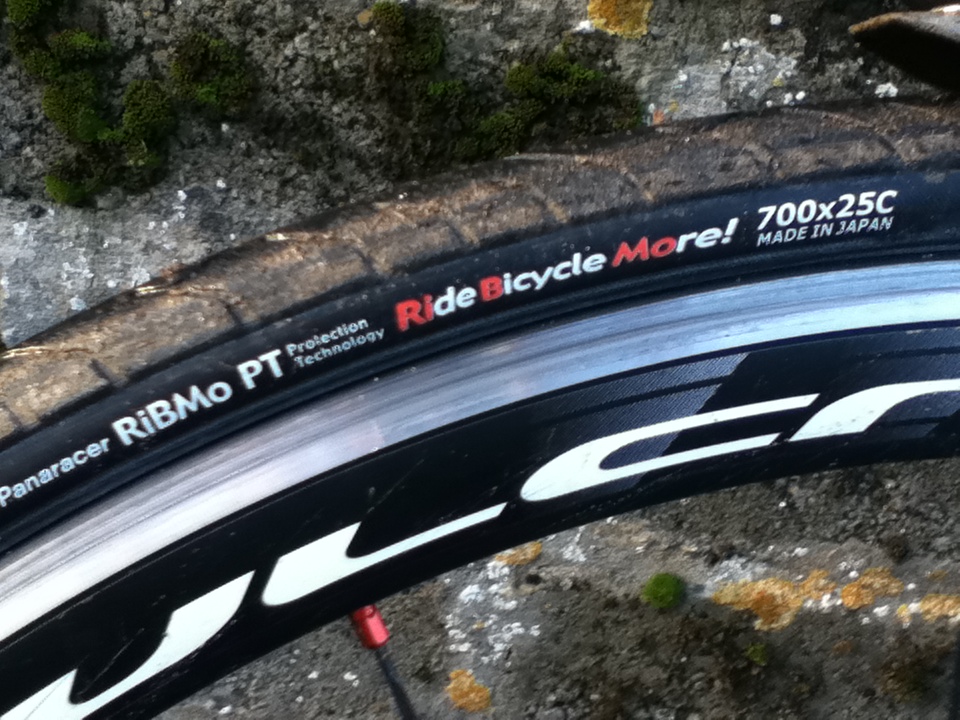
For now, it’s fair to say that the Fulcrum Racing Quattro has performed adequately, and allowed us to canter along in the sort of high cadence, mid-paced efforts typical of winter riding. They haven’t awed us with their performance on hills, but even a 1,200 gram wheelset is unlikely to transform a winter bike to the sort of machine favoured by Grand Tour specialists. In the few fast flowing corners we’ve encountered, the Quattros proved sufficiently stiff to resist lateral forces.
The wheels are shod with Panaracer RibMo rubber, in 25c. So far, so average. The 27tpi construction provides a notably stiff ride at higher pressures (we’re running them at 100psi). At 80psi, they’re more forgiving, but sluggish as result. Grip level, however, have been good.
The components
We’ve equipped the RCUK winter bike with the Shimano 105 groupset we used in our build for the Dunwich Dynamo.
The braking, made with Shimano RS650 long drop calipers and largely against wet and dirty rims, has been good. The type of riding conducted in these early stages has been almost exclusively on narrow country roads, where the occasional but sudden appearance of oncoming vehicles has necessitated rapid deceleration.
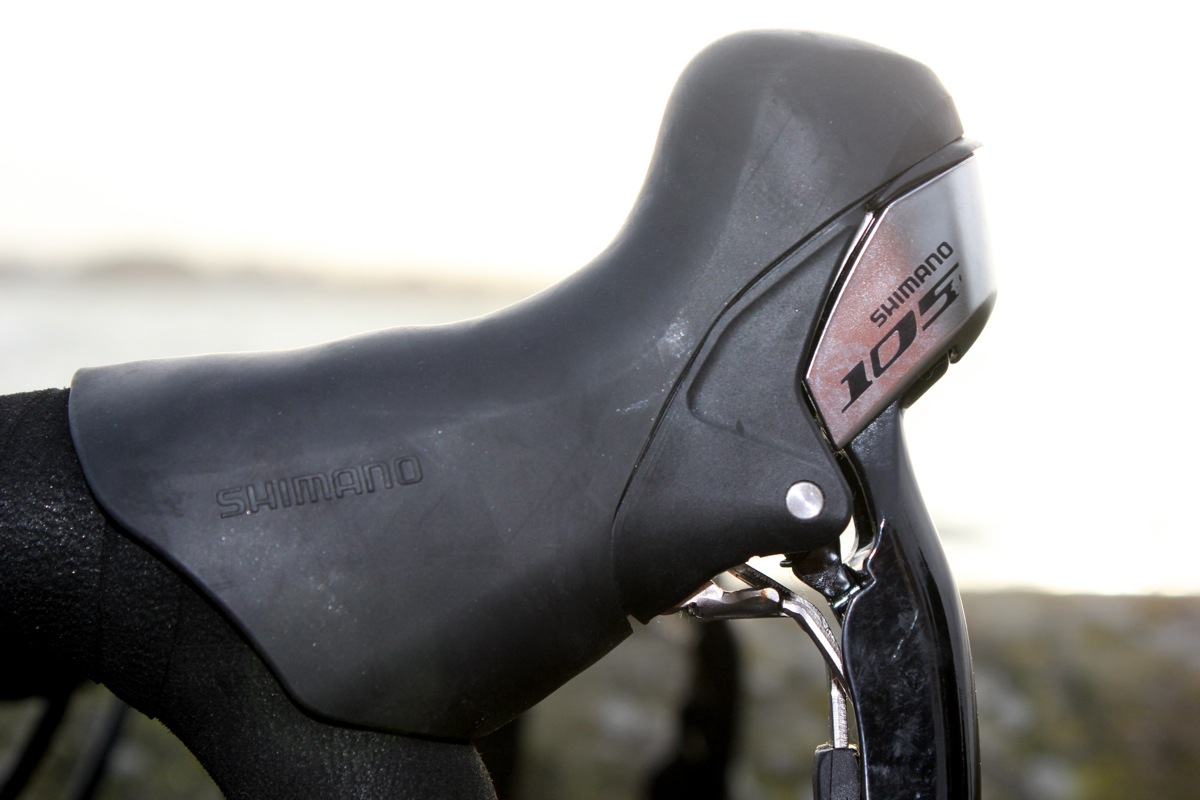
Shifting is excellent. The right hand lever has a short and positive throw. The accuracy of shifting has been most noticeable on short, sharp gradients of between six and eight per cent, which have been conquered with a rapid and regular sequence of downshifts (click, click, click), made under full load, as the road has risen. The front mech has performed its limited role in steady if unspectacular fashion.
The finishing kit
Seating arrangements come from PRO and Easton: a Falcon saddle sat atop an EC70 post. This arrangement is a deliberate attempt to introduce some absorbency into a back end that lacks the spring of steel or the compliance of high-end carbon. This attempt has been more successful with the post than the saddle, whose carbon base is extremely rigid.
It’s taken us until the third ride to get used to the shape of the PRO Falcon, having spent much of last year on bikes equipped with saddles of a significantly different profile, the majority of which came from Fizik or Selle Italia. We’re learning to like it, but will need a few more rides before reaching a conclusion, which we’ll report in a separate review.
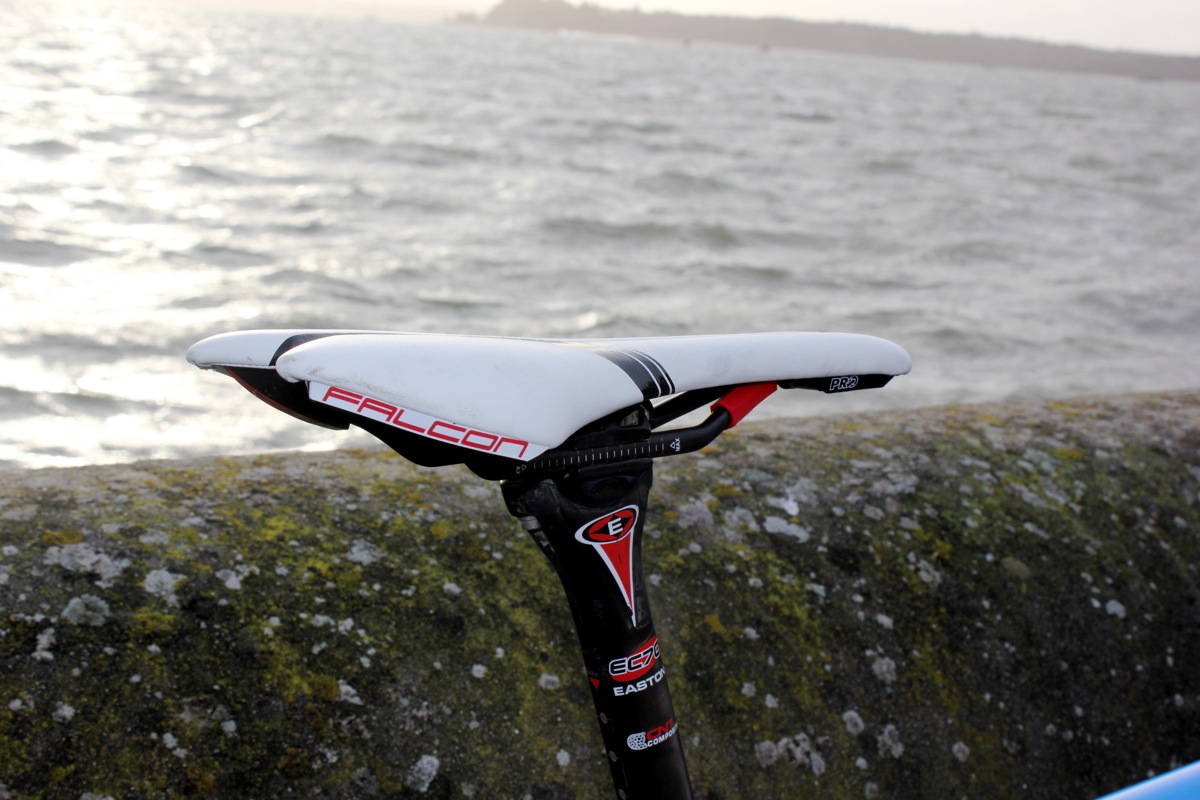
The handlebars are also from PRO: budget aluminium offerings matched to the season. The width and the drop are suitable, but the short reach has proved uncomfortable after extended periods on the hoods, and we’ll be seeking a replacement set.
The Cinelli Vai stem fitted without fuss (two bolts at the steerer clamp, four at the face plate) and has stoically performed its limited role since. The embossed logo on the face plate and the scrolling graphic on the trunk have made it a classy addition to the bike.
The accessories
The Portland Design Works mudguards have met with universal approval from all of the riding colleagues who have so far encountered the RCUK winter bike. Tim O’Rourke, who fitted them, reported positively on the experience. I have made minor adjustments at the roadside to alleviate slight rubbing introduced by greater tyre pressures.
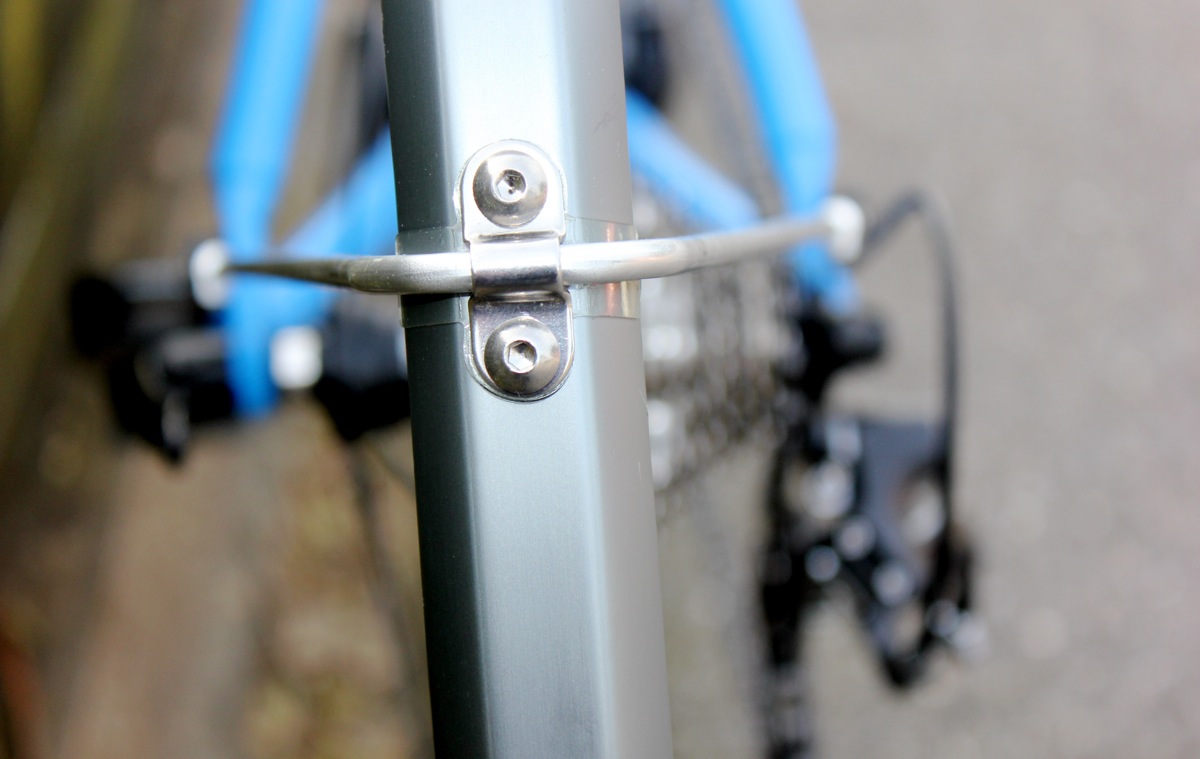
Lighting has come from the Light and Motion Taz, whose performance we’ll report separately. It’s enough to say here that it’s been excellent. We’ve used the the full 800-lumen beam on unlit country roads, and the strobe setting in daylight, which has inspired a greater degree of respect from oncoming traffic on single-track roads and at roundabout. At the rear, we’ve used a Lezyne Micro Drive, set to strobe.
The set-up
The set-up is informed by data gained from a bike fit at London’s Le Beau Velo, by Mal Pires and Jo McRae. The frame’s 74-degree seat-tube angle conforms with their recommendations, made after analysis of my flexibility and watching me pedal on a static bike jig. The TK3’s 53.8cm top tube is just 2mm longer than Le Beau’s recommended 53.6cm. The 71.5cm saddle height, 40cm handlebar, and 110mm stem are also the result of Mal and Jo’s analysis.
The ride
It’s taken just three rides to feel truly at home on the RCUK winter bike, indicative of a machine that will become a faithful companion. Minor issues were resolved on two short opening rides, made a safe distance from home (reseating a slightly raised joining pin in the chain; adjustments to the mudguards), inspiring the confidence for a 50-mile out-and-back expedition by ride three.
In the latter stages of this most recent outing, something significant happened. In a short section through a market town, I accelerated into a roundabout to seize a break in traffic, swooped around it, sprinted hard up a narrow climb into the high street to avoid unduly slowing the van on my rear wheel, sprinted away from traffic lights at a cross roads, and pushed hard on the straight route out of town in my haste to return to quieter roads.

Pedaling again through silence, I realised all of the actions described had been made instinctively, my conscious absorbed with the hazards of a bustling town. I hadn’t had time to consider the bike, something that had occupied my thoughts during most of the previous 30 miles, and nor had I needed to: the winter bike had simply responded to my input.
Further reports will follow in the months ahead as we put more miles on the TK3 and its various components. It’s likely to be a shifting line-up to meet the demands of the RCUK test schedule, but the chassis and mudguards will remain constant.
Thanks to Chicken Cycles, i-Ride, Madison, Paligap, Upgrade Bikes, and Zyro for their support for the project.

